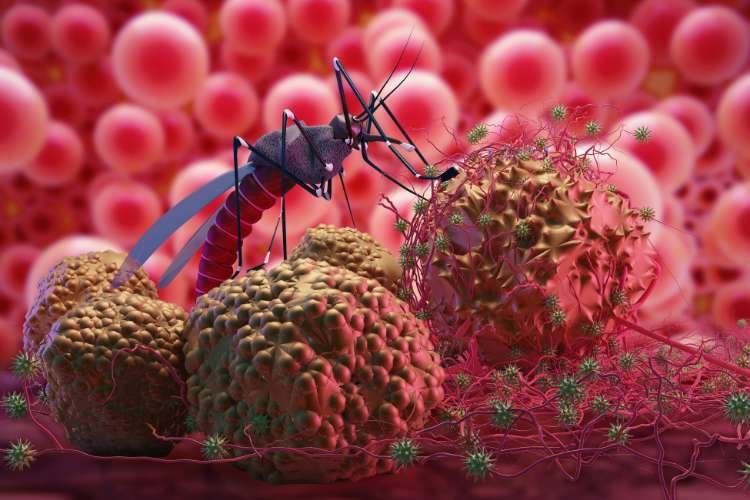In a significant breakthrough facilitated by artificial intelligence, a malaria drug has demonstrated the potential to reverse bone loss associated with osteoporosis in mice. The research, published in ACS Central Science on October 18, reveals that dihydroartemisinin (DHA), a derivative of artemisinin found in the sweet wormwood plant, successfully reduced bone loss in the femurs of mouse models suffering from osteoporosis while preserving their bone structure.
The researchers harnessed the power of AI, utilizing a machine learning algorithm they had previously developed to explore the impact of small-molecule drugs on gene expression. This approach aimed to discover innovative ways to repurpose drugs. Unlike conventional osteoporosis treatment strategies, which primarily target the slowdown of bone breakdown regulated by osteoclasts, the Peking University team focused on reinforcing existing bone. Their AI algorithm identified compounds that influenced the genes responsible for the differentiation of bone marrow mesenchymal stem cells (BMMSCs) into osteoblasts, responsible for bone formation.
Through their AI-driven analysis, DHA emerged as a potential candidate. To assess its impact on bone, the researchers administered DHA extracts orally to mice with osteoporosis over six weeks. By the end of the treatment period, these mice had experienced less bone loss and maintained healthier bone structure compared to untreated counterparts.
To enhance the drug’s delivery to BMMSCs, the researchers encapsulated DHA in specialized nanoparticles known as MSN-ALN, designed for bone targeting. This modified treatment was injected into mice with osteoporosis once a week for eight weeks. Remarkably, at the conclusion of the study, the treated mice exhibited bone quality nearly on par with healthy controls, presenting a substantial improvement compared to untreated osteoporotic mice. Notably, the treatment demonstrated no signs of toxicity. Subsequent experiments confirmed that the protective effect resulted from the drug’s ability to promote the differentiation of BMMSCs into osteoblasts.
This remarkable development is the second therapy in recent months to display preclinical efficacy against bone loss. In September, researchers from the University of California, Los Angeles unveiled the efficacy of a bone drug called BP-NELL-PEG in protecting mice from microgravity-induced bone remodeling, a condition they experienced while aboard the International Space Station. These findings herald a potential paradigm shift in the treatment of osteoporosis, offering hope for improved therapeutic approaches based on AI-driven drug discovery.





























